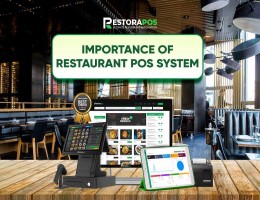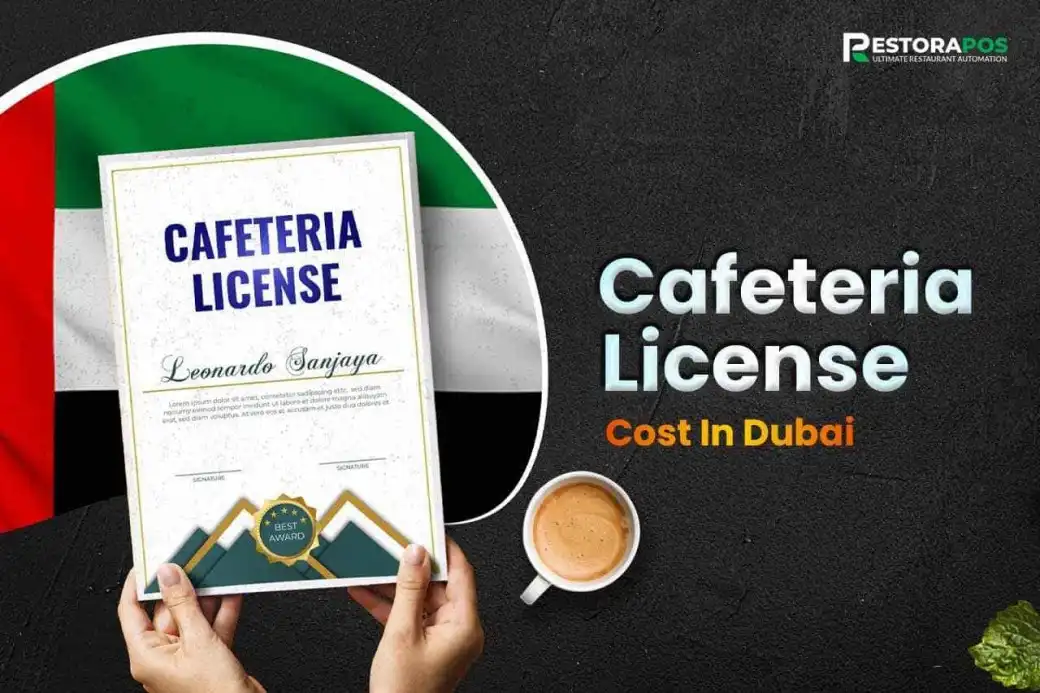How to Do Restaurant Inventory - 5 Best Restaurant Inventory Checklist

Inventory refers to all the ingredients of restaurants used to cook food and prepare food for the people. A restaurant may have different types of ingredients in the stock. Some are perishable and non-perishable ingredients that need to be decorated by maintaining a standard. But how to do restaurant inventory? There are a few steps and methods for restaurant inventory checklists. So, let’s figure out some crucial steps for doing inventory for restaurants and keeping them well-managed.
How to Do Restaurant Inventory
Restaurant inventory plays a crucial role in managing a restaurant's ingredients. Most restaurants always face challenges in managing perishable and non-perishable products. A restaurant manager needs to keep the focus on such items so as not to spoil and use them on time using the FIFO and LIFO methods. Effective methods can completely minimize food waste and food costs. Let's take some crucial steps on how to do inventory at a restaurant.
1. Choose the Best Restaurant POS Software
Choose cloud-based restaurant POS software. Because you must give the best priority to managing inventory to control and monitor restaurant ingredients. Most restaurant cloud-based Point of Sale systems collect inventory data automatically.
That simplifies restaurant stock management systems, such as ingredient tracking, ingredient level updates, purchase items, and others. Many POS software is customizable and offers an additional inventory management module. This module is specially designed for inventory management. In that case, Restora POS can be the best choice to manage your restaurant inventory.
2. Train Your Restaurant Inventory Team
A restaurant may have many restaurant staff to manage different types of tasks in different categories. Indeed, those who are engaged with managing inventory should know about ingredient processing. This is because a restaurant's inventory may have different types of items like perishable and nonperishable.
So, how to keep them in store? The restaurant inventory management staff must know that. They also know the FIFO and LIFO methods. This is because these methods are highly engaged with all types of inventory management restaurant business. They also must understand restaurant POS systems to managing restaurant inventory or stock levels. So, train them and prepare them as skilled restaurant staff.
3. Know How to Use the FIFO Method
FIFO is the best restaurant inventory checklist. Use the FIFO method of inventory valuation. We know that First In, First Out, (FIFO) is an inventory management method. The FIFO perpetual inventory method refers to the first good purchased and the first good sold. The First In First Out inventory management is generally considered the best inventory method.
It means old inventory goods will be used as the first before new inventory. In that case, those are perishable products that can be used properly. This method helps to use the product before going bad. It saves products not waste and also saves money. So, implement the FIFO method whenever you decorate inventory.
4. Maintain a Consistency
Maintaining consistency is a crucial thing. I mean to say whatever restaurant item you have maintains a flow to use that item regularly. In that case, two methods you must use the FIFO and LIFO inventory method. However, a restaurant may have different categories of inventory. Follow the first look inventory system and use them according to these two methods.
However, maintain a schedule for taking inventory products by following a schedule. You should train the staff how to rotate an inventory system. Train your staff to maintain FIFO and LIFO methods using that inventory. On the other hand, use restaurant point-of-sale software to adequately manage and track a restaurant's inventory.
5. Monitor Inventory Report
Check and update inventory reports physically or using the restaurant POS system. Check the inventory value report that will exactly help you to know about the product conditions. Check the quantity of product by the ordered date. It means how long you have purchased such items, and how much or how many you have used them.
So, the restaurant POS system will help to know many of them very easily and smoothly. On the other hand, if you don’t have a POS system then count or check them physically row by row with the help of inventory staff. Physical checking or inspection is a lengthy process. So, however, you want, monitor inventory reports on time.
6. Identify Waste and Theft Items
Not only for restaurants, but inventory management should also be maintained in the bakery business, casual dining restaurants, and coffee shops. That may have different racks with different items. If it is not tracked and counted as well then you may have dissimilarities and wrong inventory data.
How many ingredients have been wasted and how many have been stolen, keep a record of that. You must explore ways of reducing food waste management. This is because generating revenue will be difficult if food waste and inventory are not controlled properly.
Why Does Restaurant Inventory Matter?
This answer is about money. Yes money, it is because wasting food or ingredients means you are wasting money. We know that when ingredients run out then you are losing your revenue or investment. This unexpected condition may happen whenever you never track inventory and follow the inventory management method. Some other crucial factors prove why inventory matters.
- Ingredients cost control.
- Maintain standard food quality.
- Forecasting and planning about extra ingredients.
- Preventing theft and loss from your inventory.
- Maintain good relationships with suppliers.
- Accurate data analysis and relieve yourself from suspicion of the staff.
So, control and automate the restaurant inventory management system. We know well that ingredients are the main thing to run a restaurant. So, if you are not serious about controlling and monitoring, or if you have missed management of inventory. In that case, you may have a count loss.
Benefits of Restaurant Inventory Management
Managing a restaurant's inventory plays a crucial role. There are numerous benefits of inventory management. Indeed, inventory management has a bunch of benefits that will lead you to manage it in the right way. You will be obliged and more conscious about restaurant inventory management. So, take a look at a few benefits of it.
Remove Food Waste
Food waste is a common thing in the restaurant. Food waste is directly related to the restaurant investment. Food waste has a high impact on restaurant spend. To avoid food waste and save cost, inventory management is highly necessary.
So, how to minimize food waste and save costs. Use restaurant inventory management software, follow the FIFO and LIFO methods, and train the staff about inventory. So, by following these steps, minimizing food waste can enhance revenue.
Regulatory Compliance
Restaurants are separated by various regulations like food safety and handling arrangements. Indeed, an effective inventory management system helps to ensure these regulations by maintaining accurate records of inventory levels, storage conditions, and ingredient expiration dates. If you have QSR business then managing QSR inventory is essential. So, follow the compliance and use the best inventory management methods.
Vendor Relationships
By focusing on inventory item demand and ordering quantities, restaurant managers or owners can build stronger relationships with suppliers. It can lead to better pricing, discounts, and improved service from vendors. Managing on-time product ordering and stock tracking may be the best way to restrain from the blame of the food quality. So, managing inventory, there are no worries for the vendors.
Types of Inventory in Restaurants
Indeed, a restaurant may have various ingredients. That’s why there are different types of categories of restaurant inventories depending on the restaurant business type. That can be decorated in many ways. However, we have subdivided them into different categories. So, take a look at restaurant inventory categories and types.
Food Inventory
- Food inventory management includes some perishable items, non-perishable items, and frozen foods:
- Perishable food inventory list includes: fresh produce, dairy products, meats, seafood, and baked goods.
- Non-perishable items include: flour, sugar, rice, pasta, spices, etc.
- Frozen food items include: frozen meats, vegetables, pre-made dishes, and desserts.
Beverage Inventory
- Alcoholic beverages and non-alcoholic beverages, such as soft drinks, juices, water, coffee, and tea.
Kitchen Equipment Inventory
- Kitchen inventory list or kitchen equipment inventory includes cooking appliances such as stoves, ovens, grills, fryers, microwaves, knives, cutting boards, mixers, blenders, food processors, pots, pans, spatulas, ladles, tongs, etc.
Specialized Inventory Menus
- Menu specialized inventory includes specialty ingredients such as unique or random ingredients specific to the restaurant's cuisine, any special item-making equipment, pizza ovens for a pizzeria, etc.
Waste and Recycling Inventory
- Different sizes of waste bins.
- Recycling bins for separating recyclable materials.
Final Thought
Inventory management is a crucial part of the restaurant. All the ingredients of a restaurant are stored in an inventory. A restaurant may have many different types of ingredients with perishable and nonperishable items. In that case, maintaining a standard to store such ingredients is a challenge.
So, how to do restaurant inventory. Concerning that question, we have discussed some crucial points that will help you to manage your inventory in the right way. So, feel free to see the above steps and apply them to managing your inventory.





